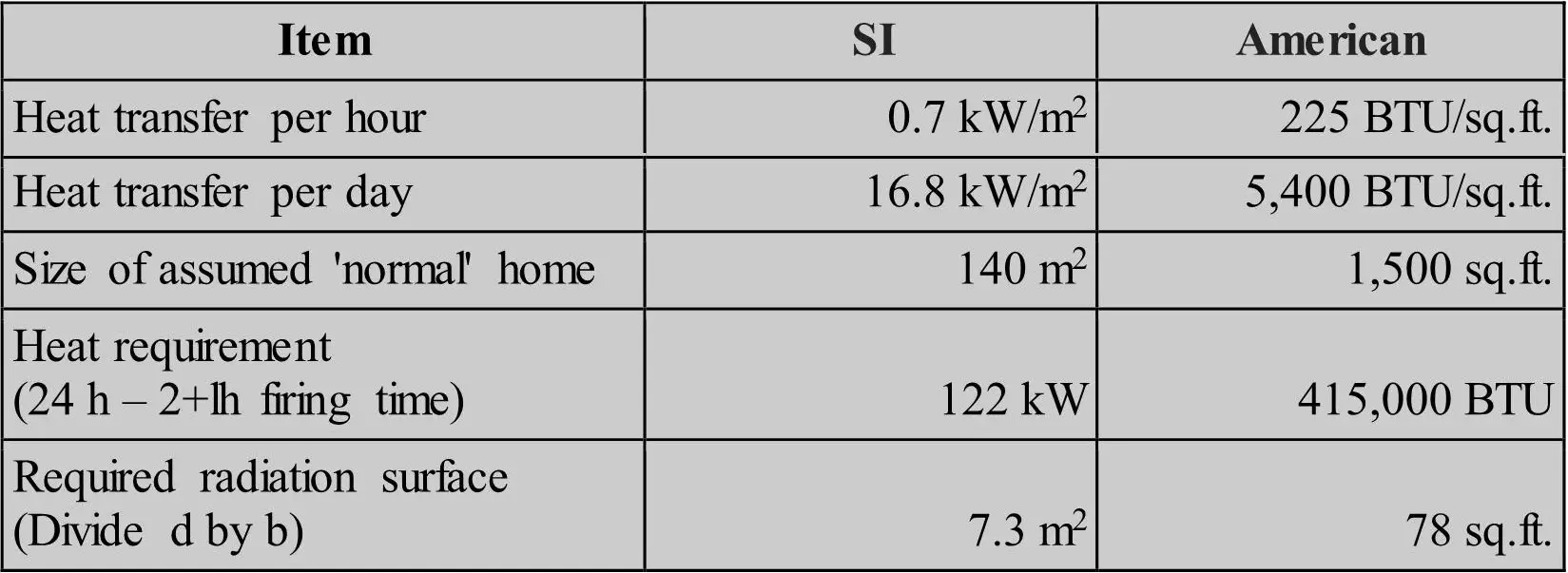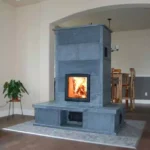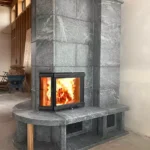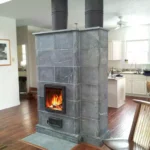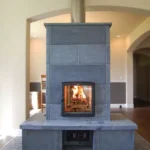DELTA T
The amount of heat that can be stored is determined by the weight, or thermal mass, of the masonry heater, a function of weight times stone temperature. The radiation surface determines the amount of heat that can be transferred into the room, which is a function of area times surface temperature.
The difference between the room temperature (also called ambient temperature) and the surface temperature of the soapstone is called Delta T. The lower the Delta T value is the more comfortable, healthful and safer the heat. Soapstone masonry heaters operate with an average surface temperature of about 170° F, or a Delta T of 100. Contrariwise, cast iron wood stoves can have a surface temperature of well over 400° F, or over double the Delta T.
- A soapstone masonry heater has three operating phases:
- Warm-up phase: The surface temperature rises from 130°F to 170°F.
- Equilibrium phase: The surface temperature is maintained nearly constant at 170°F by drawing heat from the hot core stones.
- Cool-down phase: The surface temperature starts to decline gradually.
The heater surface has the effect of acting as a stone-air heat exchanger. The amount of heat that can by physically be exchanged between these two means is a function of the Delta T, which is the difference between the soapstone surface temperature and the ambient air. For a Delta T of 100°F, the required soapstone heater surface is calculated as follows:
